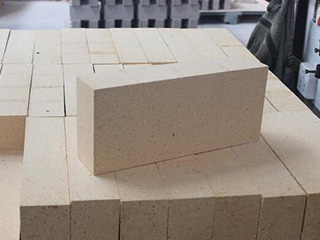When selecting high alumina bricks for a specific application, there are a number of factors that should be considered. High alumina bricks are refractory materials that are used in high temperature applications, typically above 1400°C. They are made from a combination of alumina and other materials, such as silica and magnesia, and their composition can be tailored to meet specific application requirements. Here are some key factors to consider when selecting high alumina bricks:
Temperature range: The temperature range of the application is one of the most important factors to consider when selecting high alumina bricks. Different high alumina bricks have different temperature ratings, and it is essential to choose a brick that can withstand the temperature range of the application without experiencing excessive thermal stress or cracking.
Chemical compatibility: The chemical environment of the application is also an important consideration. High alumina bricks are resistant to many chemicals, but they may not be suitable for certain environments, such as those that are highly acidic or alkaline. It is important to choose a brick that is chemically compatible with the environment of the application to ensure it will not corrode or deteriorate prematurely.

Mechanical stress: The mechanical stress of the application is another factor to consider. High alumina bricks can be brittle and may not be suitable for applications that experience mechanical stress, such as impact or vibration. If the application involves mechanical stress, it may be necessary to choose a brick with higher mechanical strength or to use additional reinforcement.
Thermal conductivity: The thermal conductivity of the brick is another important factor to consider. High alumina bricks with higher thermal conductivity will transfer heat more quickly, which can be advantageous in some applications. However, in other applications, it may be desirable to choose a brick with lower thermal conductivity to minimize heat loss.
Abrasion resistance: High alumina bricks can be prone to abrasion in some applications. If the application involves abrasion, it may be necessary to choose a brick with higher abrasion resistance or to use additional protective coatings.
Size and shape: The size and shape of the bricks needed for the application should also be considered. High alumina bricks are available in a range of sizes and shapes, and it is important to choose a brick that fits the dimensions of the application and can be easily installed.
Cost: Finally, the cost of the high alumina bricks is also an important consideration. Different types of high alumina bricks have different costs, and it is important to choose a brick that offers the best balance of performance and cost for the specific application.
In summary, selecting high alumina bricks for a specific application requires careful consideration of a number of factors, including the temperature range, chemical compatibility, mechanical stress, thermal conductivity, abrasion resistance, size and shape, and cost. By taking these factors into account, it is possible to choose the right high alumina brick for the job and ensure that it will perform effectively over the long term.
Contact: Mgr. Han
Phone: 0086-13589497465
Email: 1255953279@qq.com
Add: Industrial Area of Lingzi Town,Zichuan District,Zibo City, Shandong,China